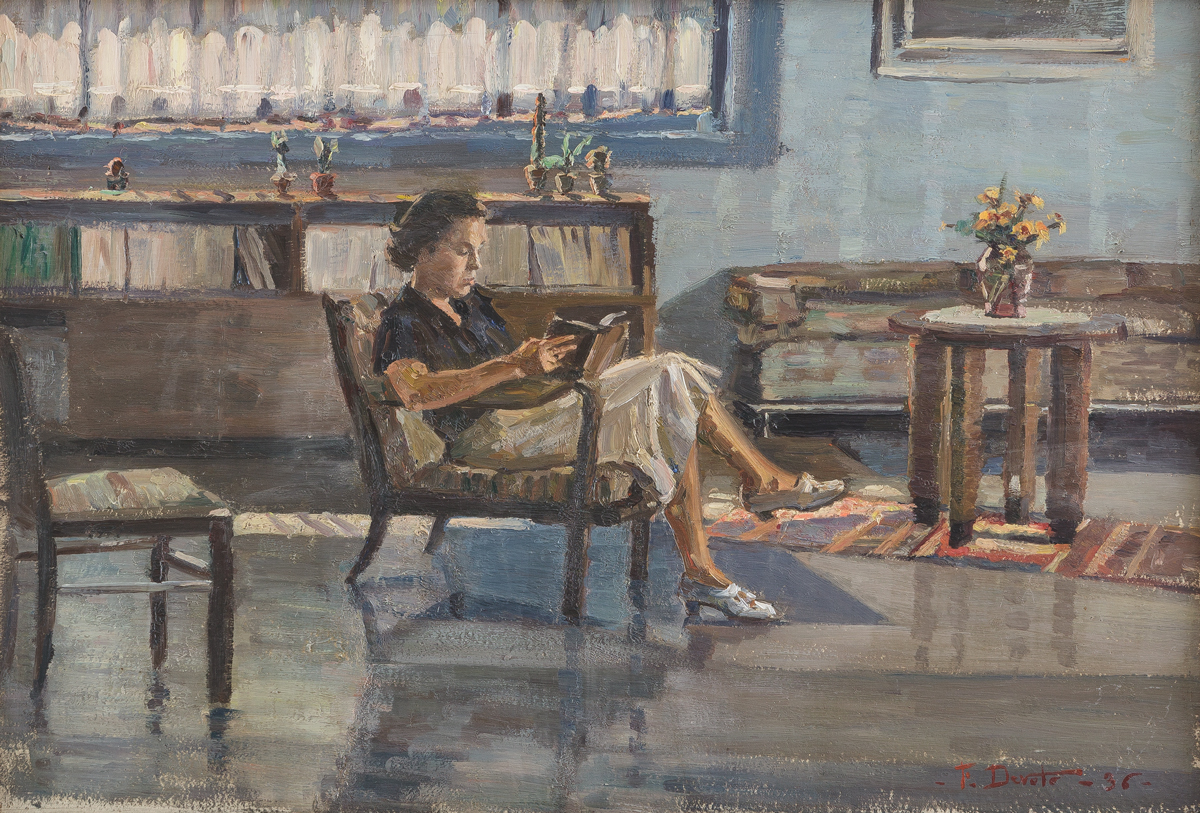Francesca Devoto, Tina nello studio di via Cavour, 1936 oil on plywood_ MAN Collection
Francesca Devoto’s painting style is a hymn to tranquility and refinement.
Her work, always far from regionalist trends and movements, is characterized by introspective and delicate painting, where each brushstroke reflects a balance of light and shadow, of soft and subdued tones.
Raised in a bourgeois environment, she studied in Florence, where she trained with the painter Nerina Simi, learning the basics by attending life drawing classes, until her definitive return to Nuoro in 1931.
From the mid-1930s, she participated in numerous exhibitions, including the VI Exhibition of the Fascist Syndicate in 1935 and the exhibition at the Palladino Gallery in Cagliari the following year. In the 1960s, she decided to distance herself from that context and withdrew, though she continued to create art.
Her scenes, often set in bourgeois interiors, are imbued with a suspended serenity, where characters absorbed in their daily activities inhabit spaces furnished with modern and understated elegance.
In her work, Devoto captures the stillness, the poetry of domestic life, where every detail, from the arrangement of furniture to the light filtering through the windows, tells a story of peaceful and meditative atmosphere. There is no space for frenzy, excess, or noise: each scene is a snapshot of a withdrawn life, distant from the social and political urgencies of her time. Her still lifes, portraits of children, self-portraits, and urban views are all examples of a painting that speaks of private worlds, of unspoken emotions, but palpable in every stroke.
To achieve these effects, the artist uses a palette rich in brown colors, warm and luminous tones.
In the 1936 oil on plywood, Tina, the artist’s sister, is depicted seated, reading. The light that enters through the window reflects on the furnishings, creating a suspended, orderly atmosphere, meticulously cared for in every detail. This same setting will be the subject of another work from 1936, held in the collection, titled The Artist’s Studio on Via Cavour. In this piece, however, the only element depicted is the space, devoid of the human figure.
Rita Moro

